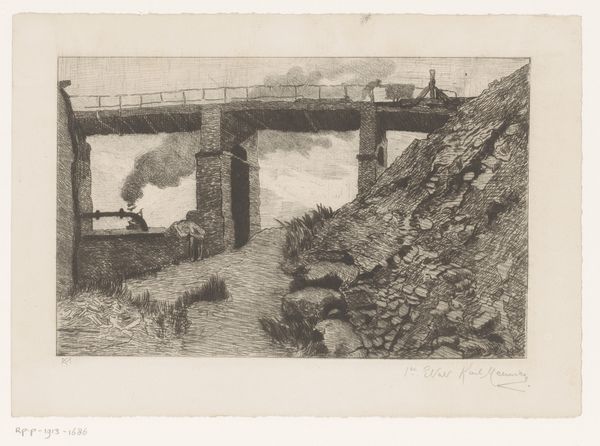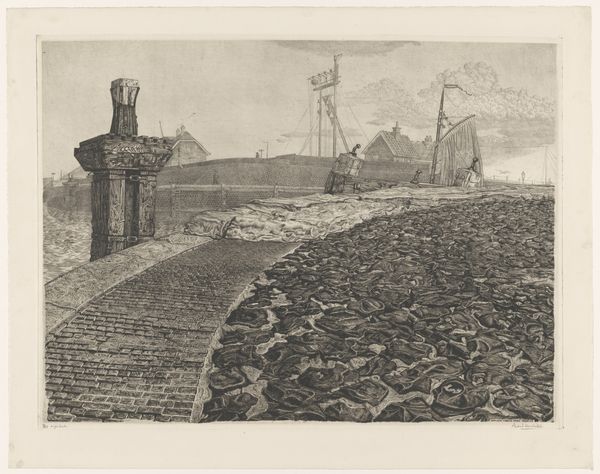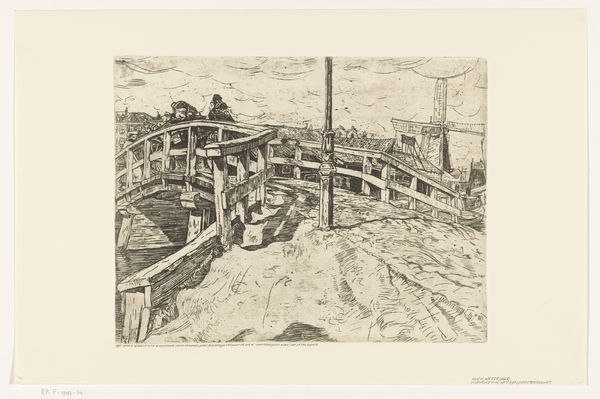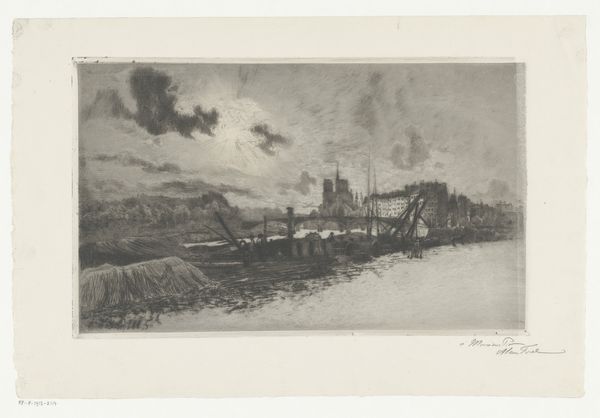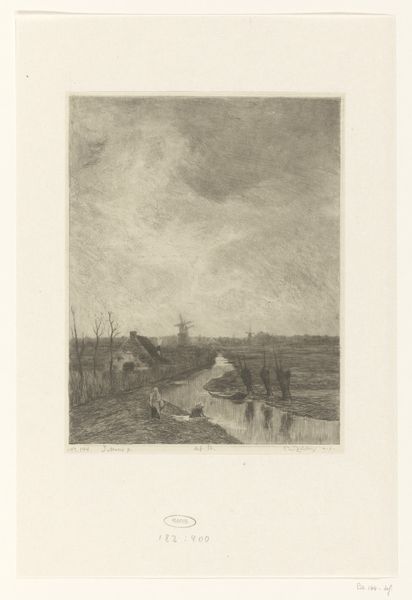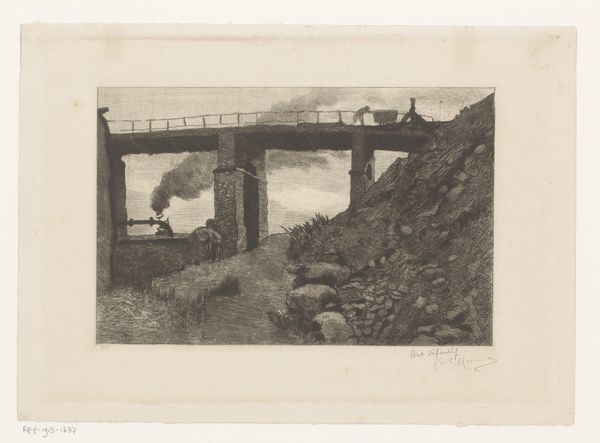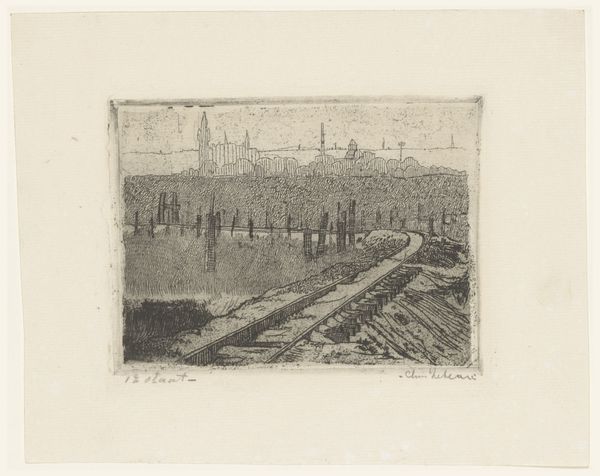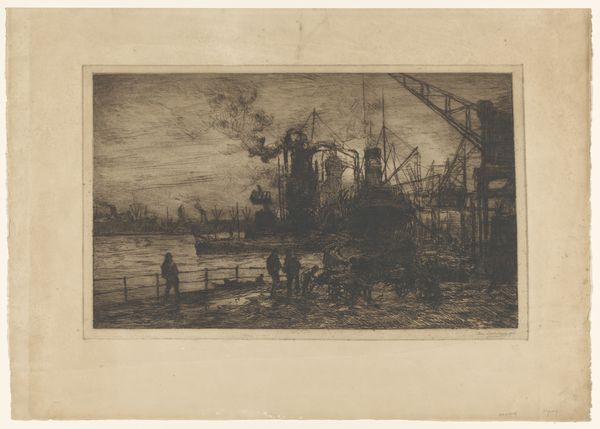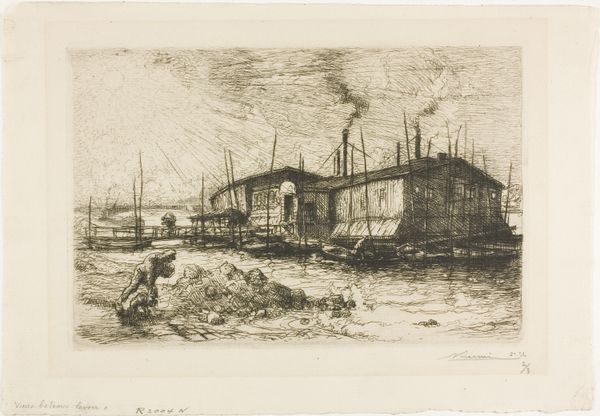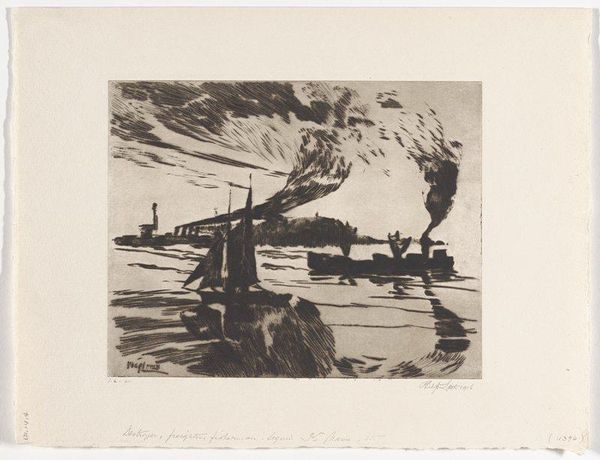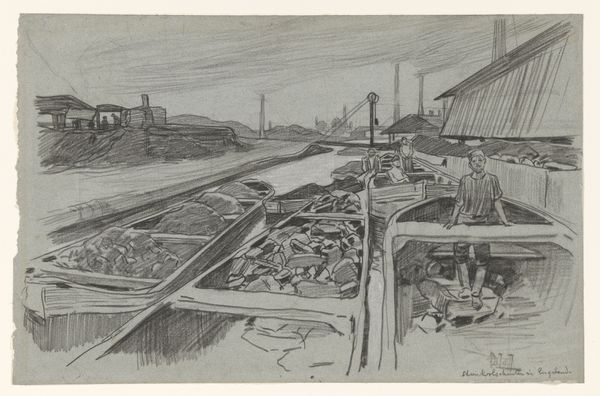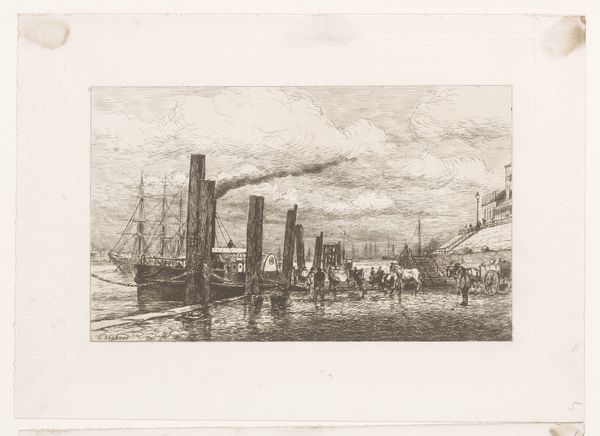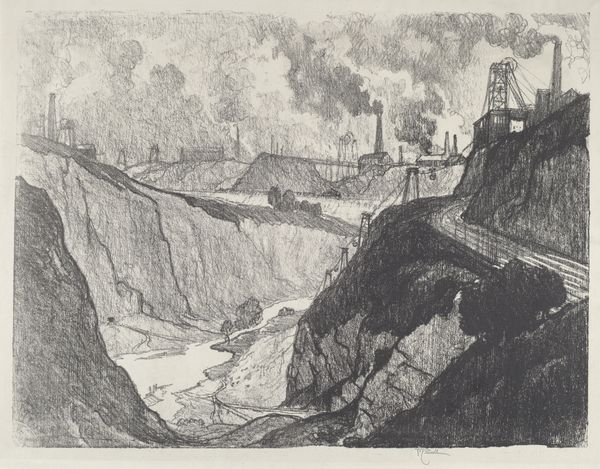
print, etching
# print
#
etching
#
landscape
#
realism
Dimensions: height 210 mm, width 293 mm
Copyright: Rijks Museum: Open Domain
Editor: This is Karl Meunier’s "Industrial Landscape with Viaduct and a Passing Train," an etching from 1892. It strikes me as incredibly bleak. All the smokestacks and dark textures seem to convey a sense of industry overpowering nature. What symbolic weight do you think is carried in a piece like this? Curator: The smokestacks certainly hold significant weight. What do they remind you of, these towering, smoky columns? Editor: Immediately, they evoke the idea of progress, but almost at a cost. The smoke could represent pollution and the general degradation of the environment. Curator: Precisely. And think about fire, its connection to both destruction and creation. Here, fire's presence is transformed into industrial power, promising advancement yet threatening devastation. Note, also, the viaduct. What does a bridge typically represent? Editor: A connection between two points, an overcoming of obstacles… but here, it feels like an imposition. Curator: Good observation. Instead of harmonious integration, the viaduct appears as a stark interruption of the landscape, a physical embodiment of industrial intrusion. Even the train seems insignificant amidst the industrial haze. Meunier’s piece becomes less about the landscape and more about what industrialization *does* to the landscape. Editor: So, even seemingly straightforward images contain complex layers of symbolism tied to the era and anxieties around progress. Curator: Exactly. And considering that this piece was created in 1892, it reflects the rising concerns about unchecked industrial expansion. Images can be powerful mirrors, reflecting cultural memories and shaping our present understanding. Editor: I’ll definitely view industrial landscapes differently from now on! It's incredible how much history is embedded within what initially seems like a simple etching.
Comments
No comments
Be the first to comment and join the conversation on the ultimate creative platform.
